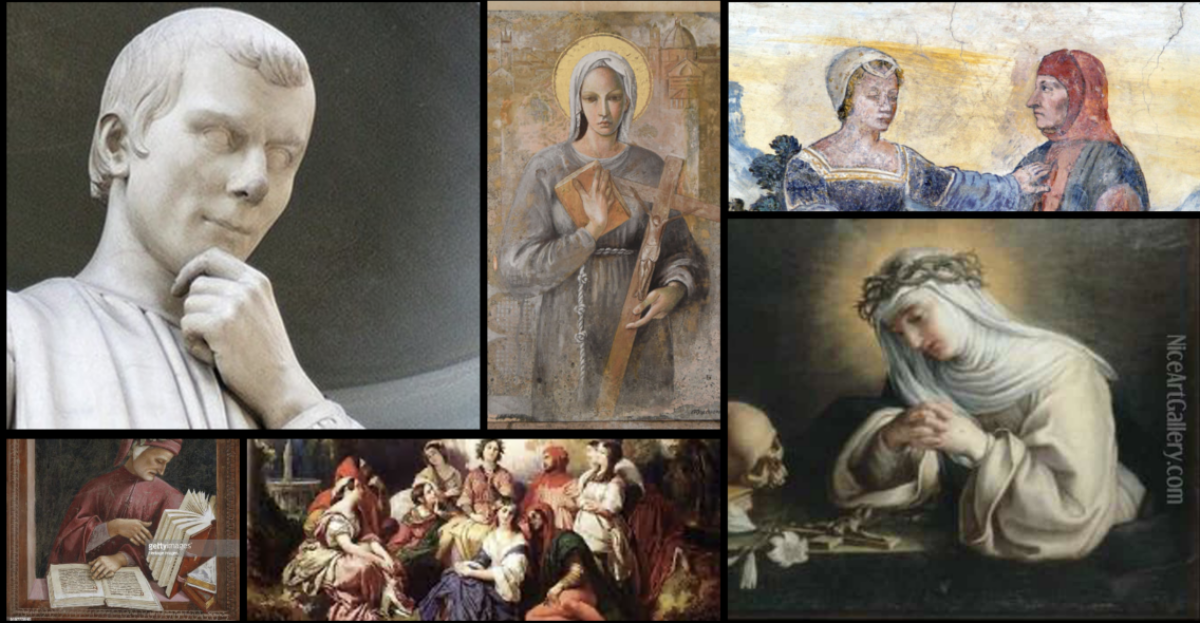
As discussed multiple times in class, women were to be seen not heard in the time when Boccaccio wrote The Decameron, but Boccaccio really dismissed that idea in the stories of the Decameron. Women are included as main characters in a lot of his stories, and one of the topics most spoken of is that of romance and lust. Throughout the stories, he writes a lot about the drama that often comes when women engage in romance, especially in day 4 story 5 and day 10 story 10.
On day 4 story 5, Filomena tells the story of Lisabetta, the sister of 3 merchants who fell in love with one of their employees. The 3 brothers do not approve and end up murdering him but Lisabetta keeps the head of her dead lover inside a flower pot. This story was very farfetched and crazy and I think Boccaccio did this on purpose to show the reader the grasp that love has on people. especially on women who are sometimes deprived( as Lisabetta was) of who they want to be with. This story in particular showcases how women can go insane from a lack of romance, in my opinion. I infer that Boccaccio views romance as something beautiful yet crazy.
In addition, the Decameron also shows women who are in very tumultuous relationships, as shown in the telling of Griselda’s story on day 10 story 10. Griselda’s husband, Marquis of Saluzzo, tests her to see how “worthy” she was to be his wife, even going as far as to pretend to kill her children; Griselda is still submissive and tolerates all his tests and still loves him. I think this story is a hyperbole to show the extreme lengths women would go to please their husband. I definitely think Bocaccio included this story to mock how submissive some women are when they shouldn’t be. I also think he thinks that women are more able to handle tough situations than men are, in day 4 story 5 Lisabetta’s brothers couldn’t even handle their sister being in love with their client, while Griselda could tolerate the cruelty her husband showed her. According to Sujay Kulshrestha in her article, Giovanni Boccaccio’s “The Decameron” and the Roles of Men and Women, Griselda’s story demonstrates that Boccacio believes “that women tolerate more adversity than men do.” Both Griselda and Lisabetta are examples of the power that love has on people but especially women in a society where they are either stripped of their lover or face cruelty from their husbands.
Citation:
Kulshrestha, Sujay. “Giovanni Boccaccio’s ‘The Decameron’ and the Roles of Men and Women.” Inquires Journal, vol. 2, no. 12, 2010, www.inquiriesjournal.com/articles/344/giovanni-boccaccios-the-decameron-and-the-roles-of-men-and-women.


